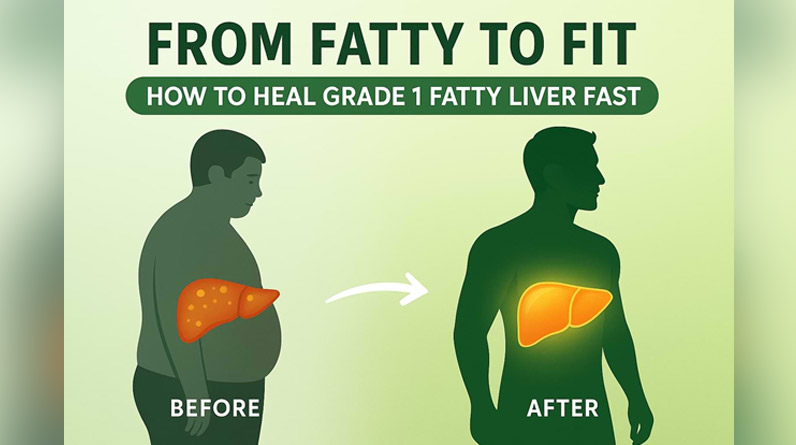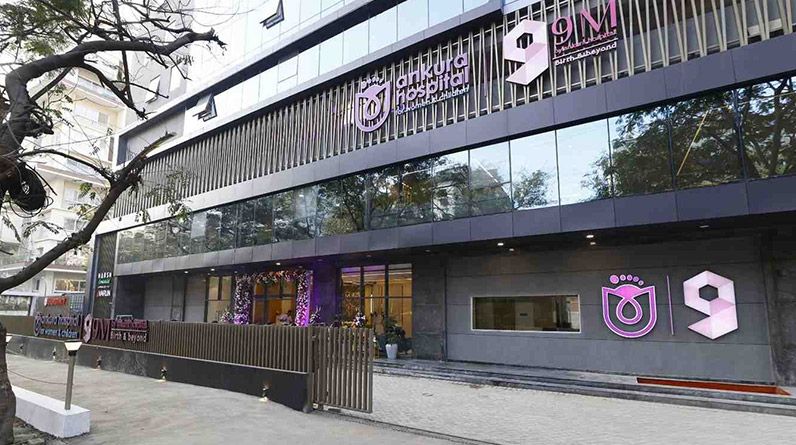Imagine your body as a factory. At the heart of the factory is your liver, working day and night to process nutrients, filter toxins, and keep everything running smoothly. Now imagine a thin layer of grease starting to build up inside the machinery, it doesn’t stop the factory from running just yet, but it’s a warning sign. That’s what happens in Grade 1 Fatty Liver. The fat accumulation hasn’t halted operations, but if ignored, the grease could jam the gears.
With the right moves, you can bounce back faster than you think. In this blog, we’ll explore exactly how to reduce fatty liver quickly, and give you practical steps to reclaim your liver health.
What is Grade 1 Fatty Liver?
Grade 1 fatty liver means a small amount of fat has accumulated in the liver cells – typically ranging from 5% to about 33% of liver cell content. At this stage:
- The liver is still functioning fairly well.
- Many people have no symptoms at all.
- It’s often picked up during routine ultrasounds or blood tests done for some other reason.
In India for example, about 12.7% of adults are estimated to have Grade 1 non-alcoholic fatty liver. And globally, among patients in a certain hospital-based study, 75.5% of the fatty liver cases were Grade 1.
Why this matters: Because left unchecked, Grade 1 can progress to Grade 2 or Grade 3 (where fat accumulation is higher, inflammation sets in, and risk of liver scarring goes up).
Why Should You Act Now
Since the liver is a master organ for metabolism, detoxification, and energy production, even mild fat buildup signals some stress. The earlier you act, the better your chances of full recovery with minimal damage. Some key stats:
- Losing around 3-5% of body weight can reduce liver fat; losing 7-10% may reduce liver inflammation and improve function.
- Sedentary people and those who exercise less than 10 minutes are far more likely to have Grade 1 fatty liver (in a given study, 94% of those exercising less than 10 minutes had Grade 1) compared with more active peers.
- If ignored, this mild stage could evolve into more severe disease, which is harder to reverse.
Bottom line: If you have Grade 1 fatty liver, you have an opportunity—and the earlier you seize it, the faster you can heal.
How to Reduce Fatty Liver Quickly: The Roadmap
Let’s break it down into actionable areas: diet, exercise, weight & metabolic control, and other lifestyle habits.
1. Diet – Feed your liver well
What you eat can either fuel fat-build-up or help reverse it. Here’s how to tip the balance:
- Increase fibre & whole foods: Foods like oats, brown rice, legumes, vegetables and fruits help reduce fat buildup.
- Choose healthy fats: Use olive oil, nuts, seeds, avocados instead of fried or processed fats.
- Cut out sugar & refined carbs: Sugary drinks, white bread/pasta, sweets – they all increase fat deposition in the liver.
- Lean proteins: Fish, chicken, tofu, legumes aid liver repair.
- Limit/alcohol avoid: Even moderate alcohol intake can worsen fatty liver.
By making these changes you’re not just reducing fat in the liver—you’re reducing overload on the whole metabolism.
2. Exercise – Activate your fat-burn switch
Moving your body helps you burn liver fat and improve liver enzyme levels. Here’s the target:
- Aim for 30-45 minutes of moderate exercise (brisk walking, cycling, swimming) at least 5 days a week.
- Add strength training (2-3 times a week) to boost muscle mass and metabolism.
- Reduce prolonged sitting; regular movement especially helps those with sedentary jobs. For instance the study found higher Grade 1 rates in those who did not walk to school or exercised less.
Exercise improves insulin sensitivity, lowers triglycerides and helps your liver pump out excess fat.
3. Weight & metabolic control
Rather than crash diets, steady changes win. Here’s what to aim for:
- If overweight, losing 5-10% of your body weight can significantly reduce liver fat.
- For added benefit (especially if there’s inflammation) aim for 7-10% weight loss.
- Keep blood sugar, cholesterol, triglycerides and blood pressure in check – all are linked to fatty liver.
Slow, sustainable weight loss is safer for your liver than crash dieting.
4. Other lifestyle habits – the supports
- Stay hydrated. Water helps your liver flush toxins.
- Avoid smoking and unnecessary medications or supplements that pressure the liver.
- Get good sleep. Poor sleep links to worse metabolic health. (Though specific data for Grade 1 fatty liver is limited.)
- Manage stress. Chronic stress can worsen hormonal and metabolic balance, indirectly affecting the liver.
Support your liver’s recovery with Rasayanam Liver Detox—your daily boost for a cleaner, healthier, and stronger liver.
Sample One-Week Action Plan
Here’s a quick example to get you started—and supercharge your progress within a month or two:
- Monday: Brisk 30-min walk, lunch: brown rice + veggies + grilled fish, skip sugary drink.
- Tuesday: Strength training (bodyweight + dumbbells), dinner: tofu stir-fry with lots of fresh greens.
- Wednesday: Swim or cycle for 35 min, avoid fried snacks, snack on fruits and nuts.
- Thursday: 30 min walk plus add 10 min stretching/yoga, reduced portion size of dinner by ~10%.
- Friday: Strength training again, low-carb dinner (salad + lean protein).
- Saturday: Active recreation (hike, long walk with friend), treat yourself moderately but avoid excess sugar.
- Sunday: Rest day but keep moving (light walk), plan meals for coming week with liver-friendly choices.
Repeat this pattern, track your weight / waist size / energy levels and adjust gradually.
Expected Results & Time-frame
If you commit to the plan above:
- In 4–6 weeks, many people notice improved energy, maybe slight weight drop, and better waist measurement.
- In 3-6 months, you could significantly reduce liver fat (especially if your weight drops by ~5-10%) and get better test results (ultrasound / blood liver enzymes).
- Since Grade 1 fatty liver is reversible, you can restore your liver to nearly normal function—but only if you stay consistent.
Keep in mind: Everybody is different. Age, genetics, the presence of diabetes or high cholesterol will influence the speed of healing.
When to Consult a Doctor
While lifestyle steps are the main “treatment” for Grade 1 fatty liver, medical supervision is important if:
- You also have diabetes, high blood pressure, high cholesterol or other metabolic disorders.
- Liver enzymes (ALT, AST) are elevated or imaging shows signs of inflammation or fibrosis.
- You have significant alcohol intake or other liver disease risk factors.
Conclusion
If you’ve been diagnosed with Grade 1 fatty liver, don’t panic. This is exactly the stage where you can make meaningful change. With the right diet, consistent exercise, weight loss where needed, and good habits, you can reverse the condition and get your liver back into shape. Use this as your launchpad: aim for fast but sustainable changes, track your progress, and celebrate every step towards fit and healthy liver function.



